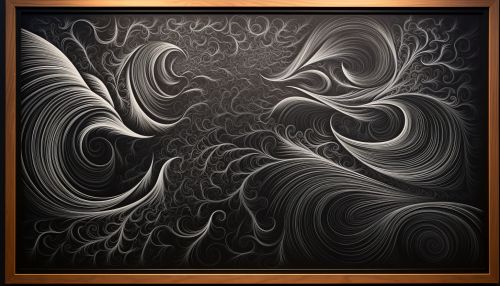Differential Equations
Introduction
A Differential Equation is a mathematical equation that relates a function with its derivatives. In applications, the functions usually represent physical quantities, the derivatives represent their rates of change, and the equation defines a relationship between the two. Because such relations are extremely common, differential equations play a prominent role in many disciplines including engineering, physics, economics, and biology.
Types of Differential Equations
Differential equations can be divided into several types. Below, we explore some of these types in detail.
Ordinary Differential Equations
An Ordinary Differential Equation (ODE) is a differential equation containing one or more functions of one independent variable and its derivatives. The term "ordinary" is used in contrast with the term "partial differential equation" which may be with respect to more than one independent variable.
Partial Differential Equations
A Partial Differential Equation (PDE) is a differential equation that contains unknown multivariable functions and their partial derivatives. PDEs are used to formulate problems involving functions of several variables, and are either solved in closed form, or used to create a relevant computer model.
Linear Differential Equations
A Linear Differential Equation is a differential equation that is defined by a linear polynomial in the unknown function and its derivatives, that is an equation of the form. A simple example is the exponential decay model, which can be derived from the linear differential equation.
Nonlinear Differential Equations
A Nonlinear Differential Equation is a differential equation that is not a linear equation in the unknown function and its derivatives. The behavior of nonlinear differential equations is not as well understood as that of linear differential equations, but they do appear in a variety of applications.
Solving Differential Equations
The methods for solving differential equations generally depend on the type of differential equation, whether it is ordinary or partial, linear or non-linear, and the order of the equation.
Exact Solutions
In some cases, it is possible to find an exact solution to a differential equation. This is typically done using a variety of techniques, such as separation of variables, integrating factors, or the method of characteristics.
Numerical Solutions
When an exact solution is not possible, numerical methods can be used to approximate the solution. These methods, such as the Euler method or the Runge-Kutta method, involve discretizing the differential equation and then solving the resulting system of equations.
Symbolic Computation
Symbolic computation software, such as Mathematica or Maple, can often be used to solve differential equations symbolically. These programs use a combination of algebraic techniques and numerical methods to find solutions.
Applications of Differential Equations
Differential equations have a wide range of applications in various fields. Here, we explore some of these applications.
Physics
In physics, differential equations are used to describe a wide variety of phenomena. For example, Newton's second law of motion, which states that the force acting on a body is equal to the mass of the body times its acceleration, can be formulated as a differential equation.
Engineering
In engineering, differential equations are used to model systems such as electrical circuits, fluid dynamics, and heat transfer. For example, the behavior of an RLC circuit can be modeled using a second-order differential equation.
Biology
In biology, differential equations are used to model populations, the spread of diseases, and the interaction between species. For example, the Lotka-Volterra equations are a pair of first-order nonlinear differential equations used to describe the dynamics of biological systems in which two species interact, one as a predator and the other as prey.
See Also


